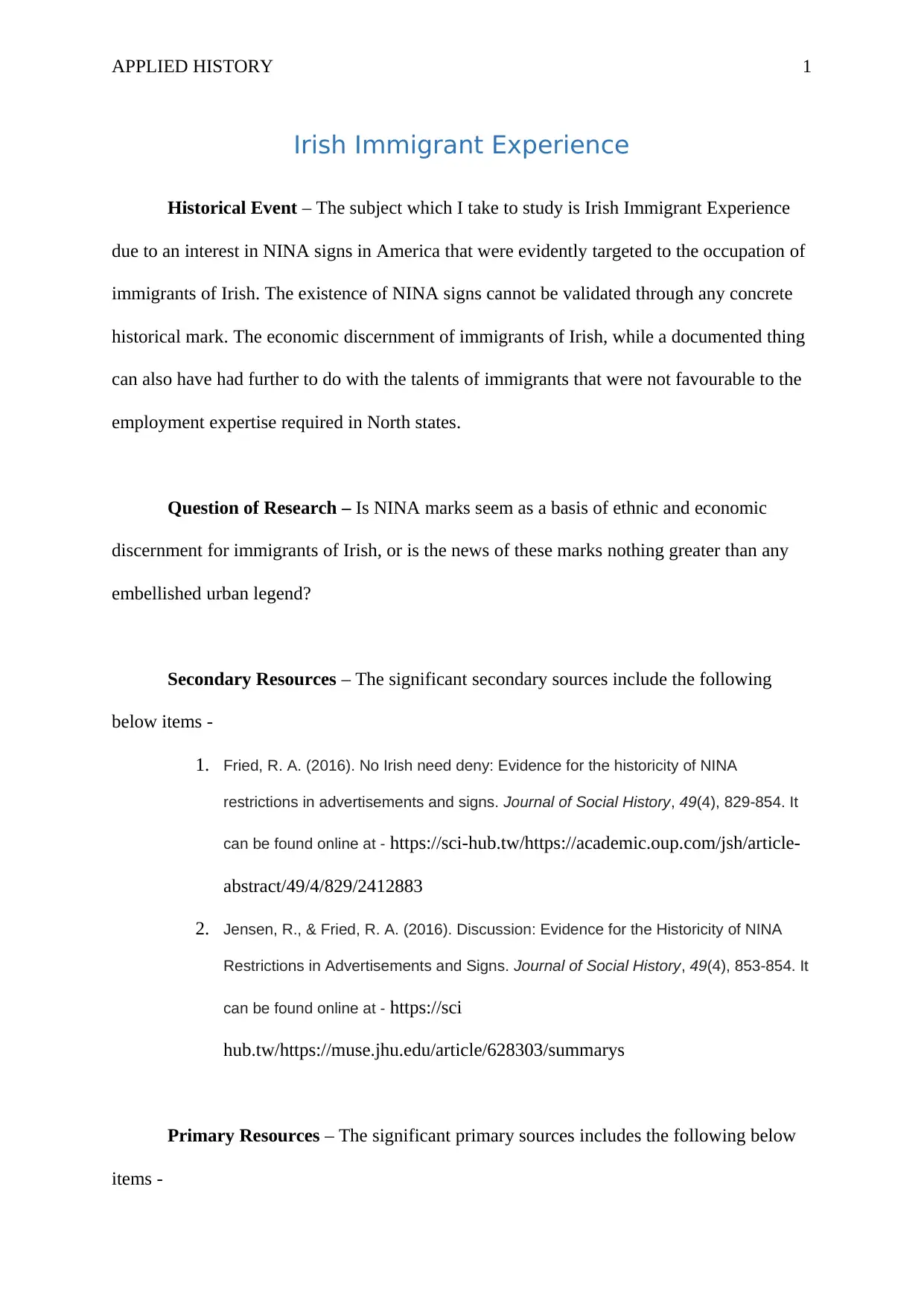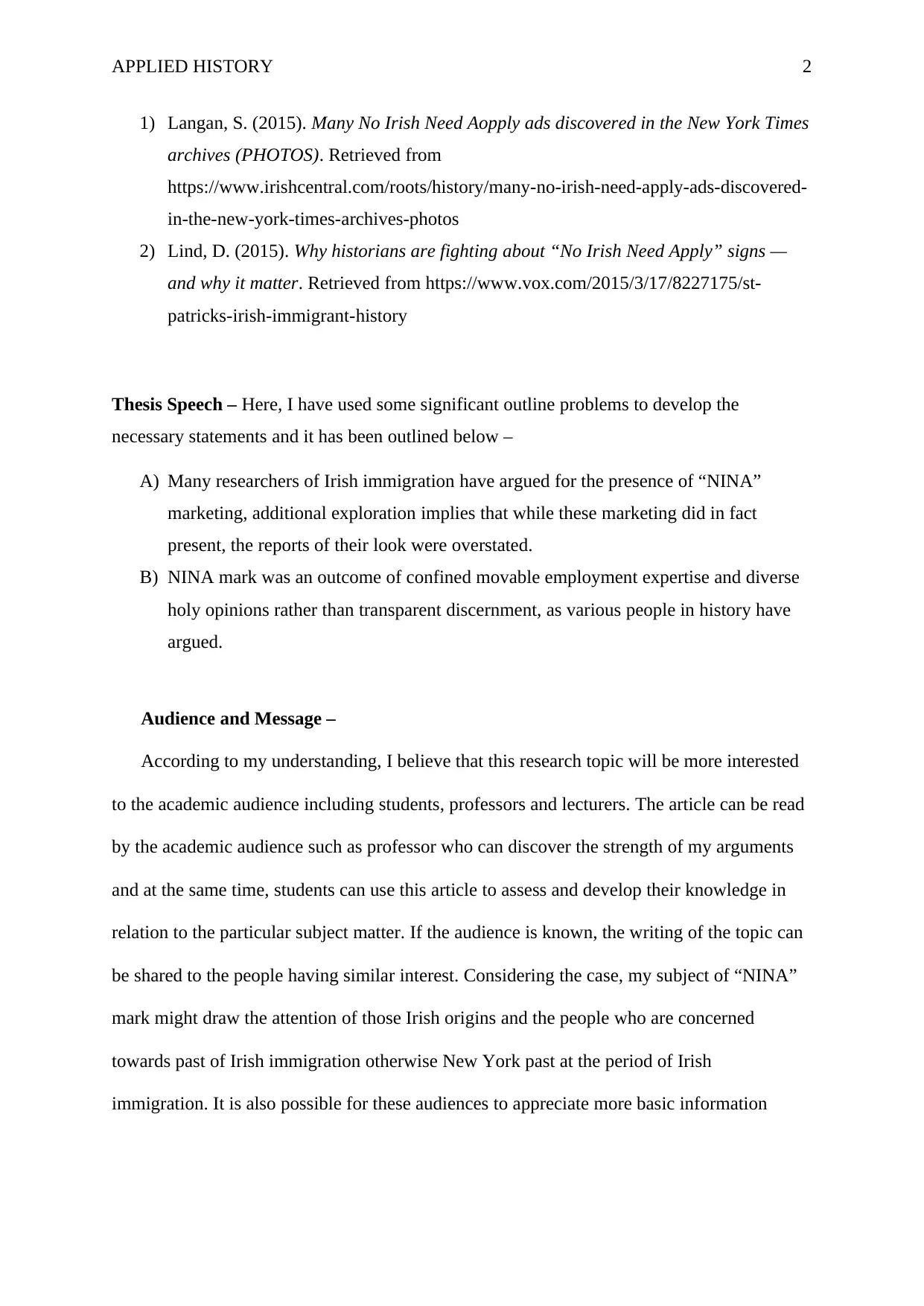HIS 200 Project 1: Investigating the Irish Immigrant Experience
VerifiedAdded on 2022/08/20
|4
|594
|12
Project
AI Summary
This project, for HIS 200, investigates the Irish immigrant experience in America, specifically examining the historical significance of "NINA" (No Irish Need Apply) signs. The research question explores whether these signs represent ethnic and economic discrimination or an embellished urban legend. The project utilizes both primary sources, such as articles from the New York Times archives, and secondary sources, including academic articles discussing the historicity of NINA restrictions. The author argues that while NINA signs existed, their impact may have been overstated, influenced by limited job skills and religious differences rather than overt discrimination. The target audience includes academics, students, and individuals interested in Irish immigration and New York history. The project aims to provide a nuanced understanding of this historical issue.
1 out of 4





![[object Object]](/_next/static/media/star-bottom.7253800d.svg)